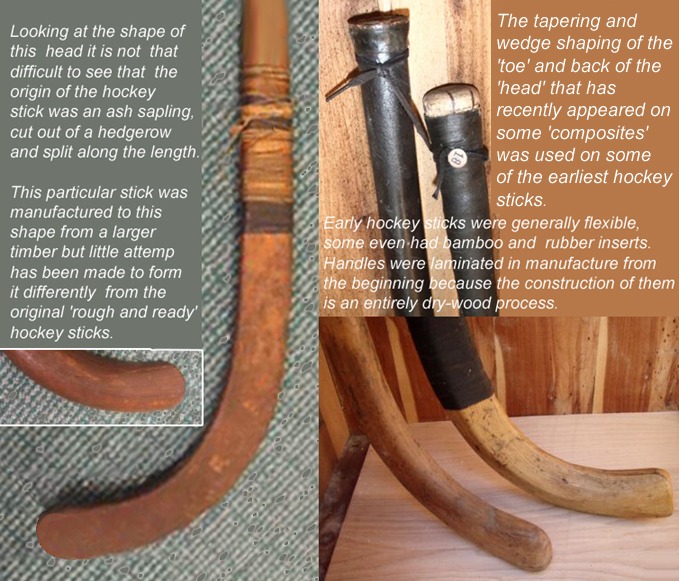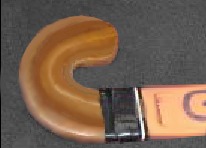The hockey stick is one of the most evolving pieces of equipment. There was a time when hockey sticks were simply made from wood and then later incorporated curves. However, today hockey sticks have turned into high-performance composite sticks. It might seem a simple equipment from the outside but its history is interesting. Let’s cover the creators of the original hockey sticks and how they evolved over the years.
The Origins of the Hockey Stick
Back when Hockey sticks were introduced, many other sporting equipments such as football were on the rise. However, it would take time for such equipment to popularize and settle amongst the fans. However, when compared to football, the origin of the hockey stick is completely different.
According to historians, the hockey stick might have originated from the Mi’kmaq tribe of Native Americans who existed in Atlantic Canada somewhere around the 1800s. At the time, the sticks were made from Birch and Hornbeam trees while the stick was originally called a Mic-Mac hockey stick. Furthermore, Hornbeam wood was so strong that it was often called “ironwood”.
When compared to the field hockey sticks, the original hockey sticks shared quite a bit of resemblance whereas being slightly different than modern ice hockey sticks. Plus, the sticks were carved out of one continuous piece of wood. Then, in the mid-19th century, a company called Star Manufacturing began producing and selling the sticks across North America.
At the time, manufacturing hockey sticks was a primary occupation of the Mi’kmaq population. The Mi’kmaq continued producing sticks until the manufacture was industrialized in the 1930s.
A Mi’kmaq stick made between 1852-1856 was sold in 2006 for $2.2 million. It was considered the world’s oldest hockey stick. At the moment, the stick is valued at around $4.2 million.
The First Hockey Sticks (1900s)
Since the demand for Hornbeam products increased, the supply of Hornbeam began to diminish and Ash and Yellow Birch replaced Hornbeam as the main manufacturing material. Between Ash and Birch, Ash won and by the 1920s, it was the most preferred wood choice for two-piece wooden sticks.
Then, Hespeler a famous company at the time began inserting blades between the joints and gluing them to a wooden shaft. The company would eventually file a patent for their two-piece design. Moreover, at the time, hockey sticks were still straight. However, it is believed that Cy Denneny of the Ottawa Senators was the first one to curve his stick into a ‘banana blade’ in 1927
Even though Denneny’s idea would later catch up but due to his unpredictable knuckler shots, it did not receive much attention. The most popular shots were wrist flicks and backhands. Although Slap shots existed as well but no one actually tried playing them.
Mid 1900s Hockey Stick Innovations
The hockey stick did not progress or develop much interms of technology between the 1920s and 1960s. It was in the 1950s that companies like Sher-Wood and Canadien began manufacturing blades from fiberglass. As a result, it became a mainstream technology.
This was the time when companies began wrapping sticks in fiberglass and using lightweight Aspen wood instead of Ash. As a result, the overall weight of the hockey sticks was reduced.
Even though curved blades had been discovered before but Stan Mikita, a hockey player of the Chicago Blackhawks, an all-time leading scorer plus hall of famer popularized using hockey sticks with curved blades. It is said that his blade got caught in a crack in the boards.
As a result, it broke into a V shape. He then discovered that he could play more powerful and faster shots. Mikita along with his teammate Bobby Hull then began working on perfecting the curve blades. They used hot water to run the sticks under and door jams to bend the blades.
Hockey Sticks of the 1970s and 80s
With the increase in popularity of the curved blades, the shot velocities were increasing while shot control was decreasing. As a result, it forced the NHL to restrict the curves of hockey sticks. Initially, the curved was limited at 1-inch in 1969-1970 while being reduced to a ½ inch curve limit.
The 1970s era brought one of the most popular sticks of all time to the market, the Sher Wood P.M.P. 5030. The hockey stick featured a shaft with Aspen core and multi-layer Birch lamination along with a White Ash blade crapped in impact-resistant fiberglass..
At the same time, Canadian companies like Canadian and Sher Wood began to dominate the market. Then, in the 1980s, companies like Titan and Koho entered the scene and started gaining momentum.
Hockey Sticks in the 1990s-Aluminum Hockey Sticks
The aluminum hockey sticks were introduced in the 1980s but lacked a great ‘feel’. To solve the issue of feel, the manufacturers began manufacturing aluminum shafts and inserting wooden blades in the bottom. The result was a winning combination. While the aluminum shafts were durable, strong, and sturdy, the wooden blades on the other hand were easily replaceable and cheap.
The aluminum shafts also enabled the manufacturers to maintain consistency in flex and weight, which the wooden sticks lacked until this point. Wayne Gretzky was the one who popularized aluminum hockey sticks around the world by signing an endorsement deal with Easton for using their HXP 5100 aluminum shafted stick.
Easton Synergy Once Piece Composites
The year 2001, saw Easton Synergy introducing their first-ever once-piece hockey stick. It was recognized for its beautiful reflective silver and marked the era of one-piece composites. Although the NHL’ers did not take the stick seriously but Scott Gomez became the first one to play with one full time.
The original synergy was both lightweight and managed to achieve that one-piece feel, which was missing with aluminum and composite shaft/blade combinations for so long.
Final Word
The world of hockey sticks is now full of companies trying to introduce newer sticks. CCM, Bauer, True, and Warrior are some of the top companies in the game. With the sport’s popularity increasing each day, the refinements follow as well. Almost every year, the NHL introduces new rules and regulations to ensure that the game is not only fair and balanced but also catches up with other sports.





